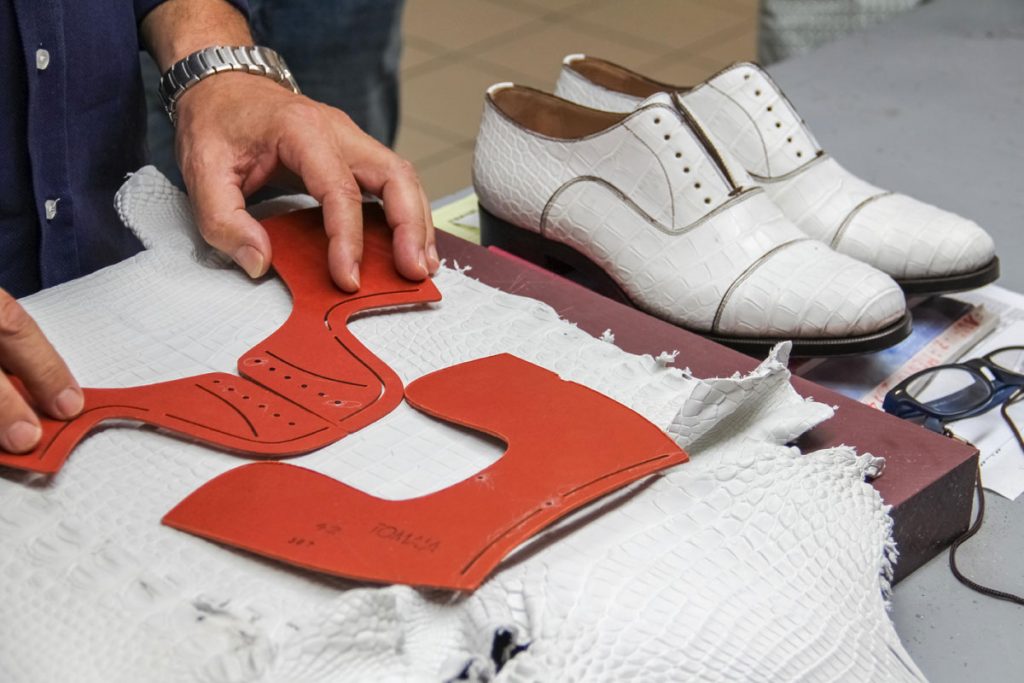Factory Visit: Christian Louboutin’s Aurelien Production Facility
Exploring the masterful leather production of the acclaimed brand’s new sneakers
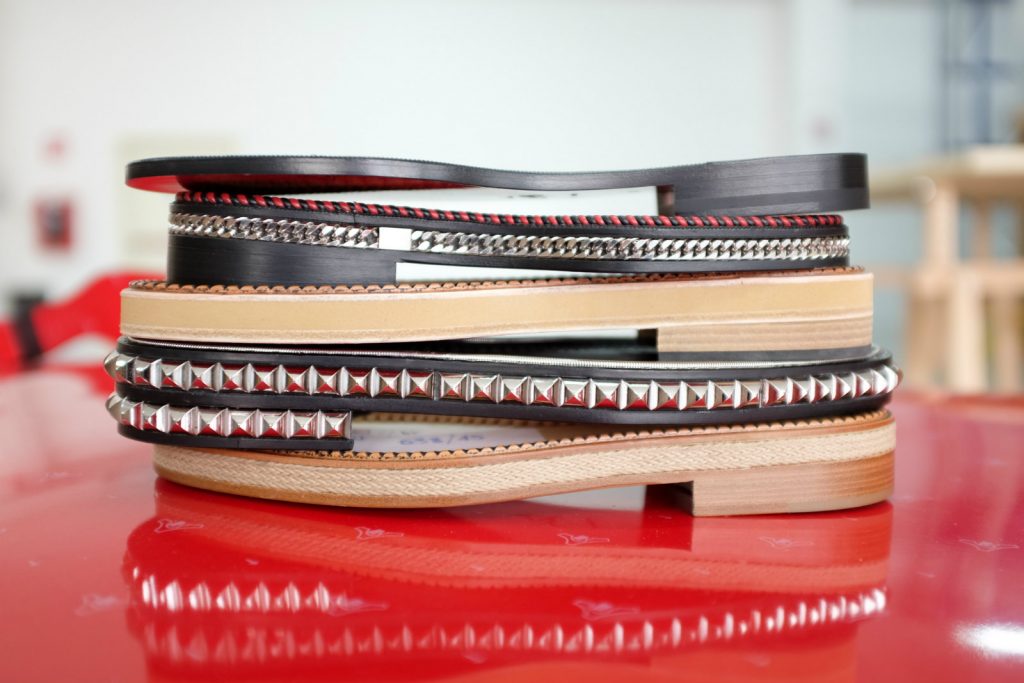
Tuscany’s international renown stems from its nature and art—the beauty of the hills and the enduring magic of the Renaissance. The crafts of the region are also very well known—leather in particular. But most people are unaware of the level of sophistication and technology that such workmanship involves. Recently we were invited by Christian Louboutin to discover the complex production of Aurelien, the brand’s latest sneaker. They’re produced entirely in the district of Santa Croce sull’Arno. Located not far from Florence, this production area is famous for quality leather goods made for Italian and international brands. This is the first time that the company has allowed us to take pictures inside their production sites in the region.
Based in Paris since its early days, Louboutin has established the great majority of its production in Italy, from Milan to Naples. Aurelien is produced entirely in Tuscany—and it’s an unexpectedly innovative piece of fashion and engineering. The sole alone is a composition of eight pieces, while the upper assembles 45 different elements.
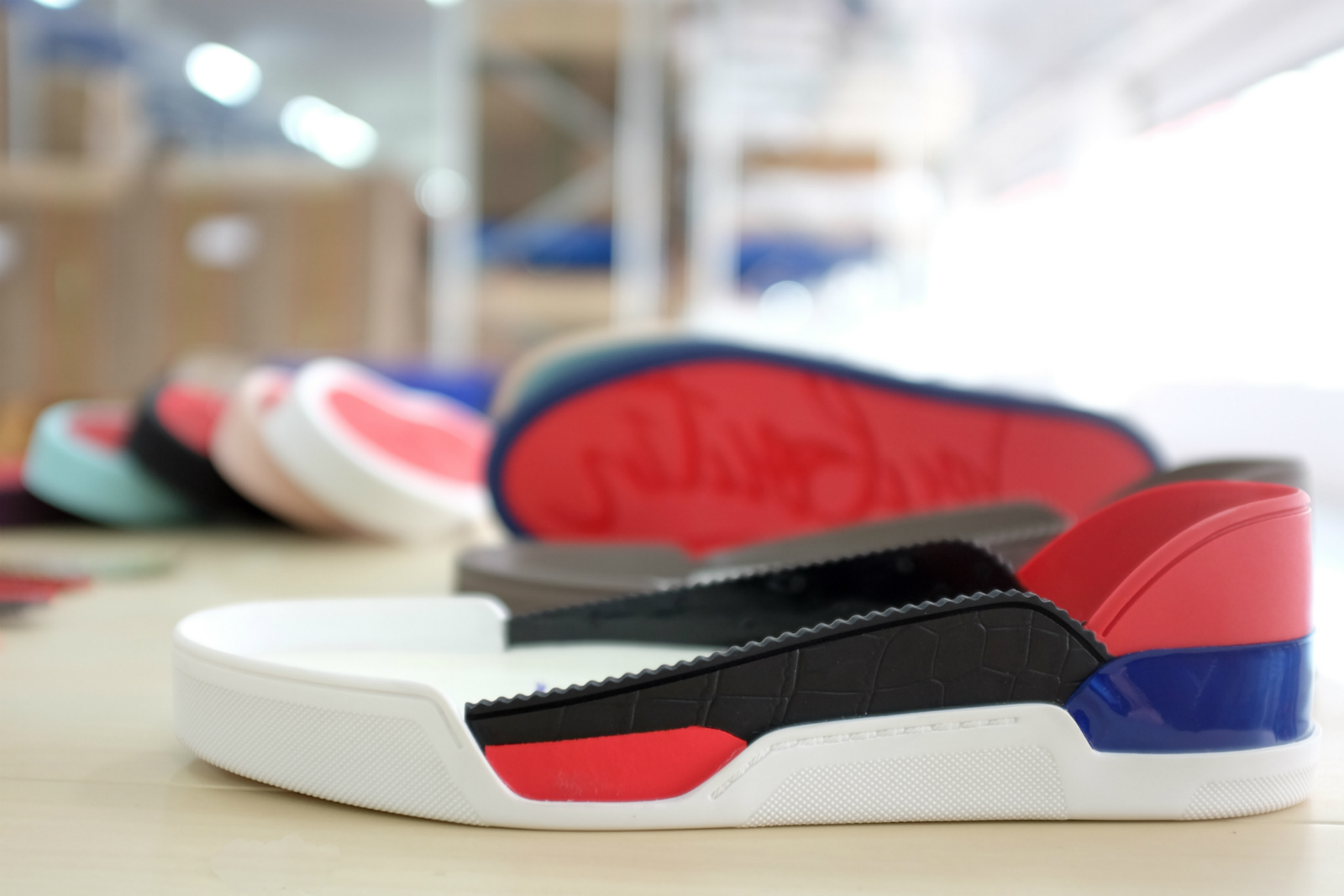
Our visit began with the production plant for the composite soles. This second-generation business started decades ago with the classic production of leather soles and today focuses on high-end rubber soles, as well. The space is extremely high-tech, clean and temperature controlled—far from the traditional idea of a footwear factory. In fact, it feels more like a laboratory or an assembly line for electronics.
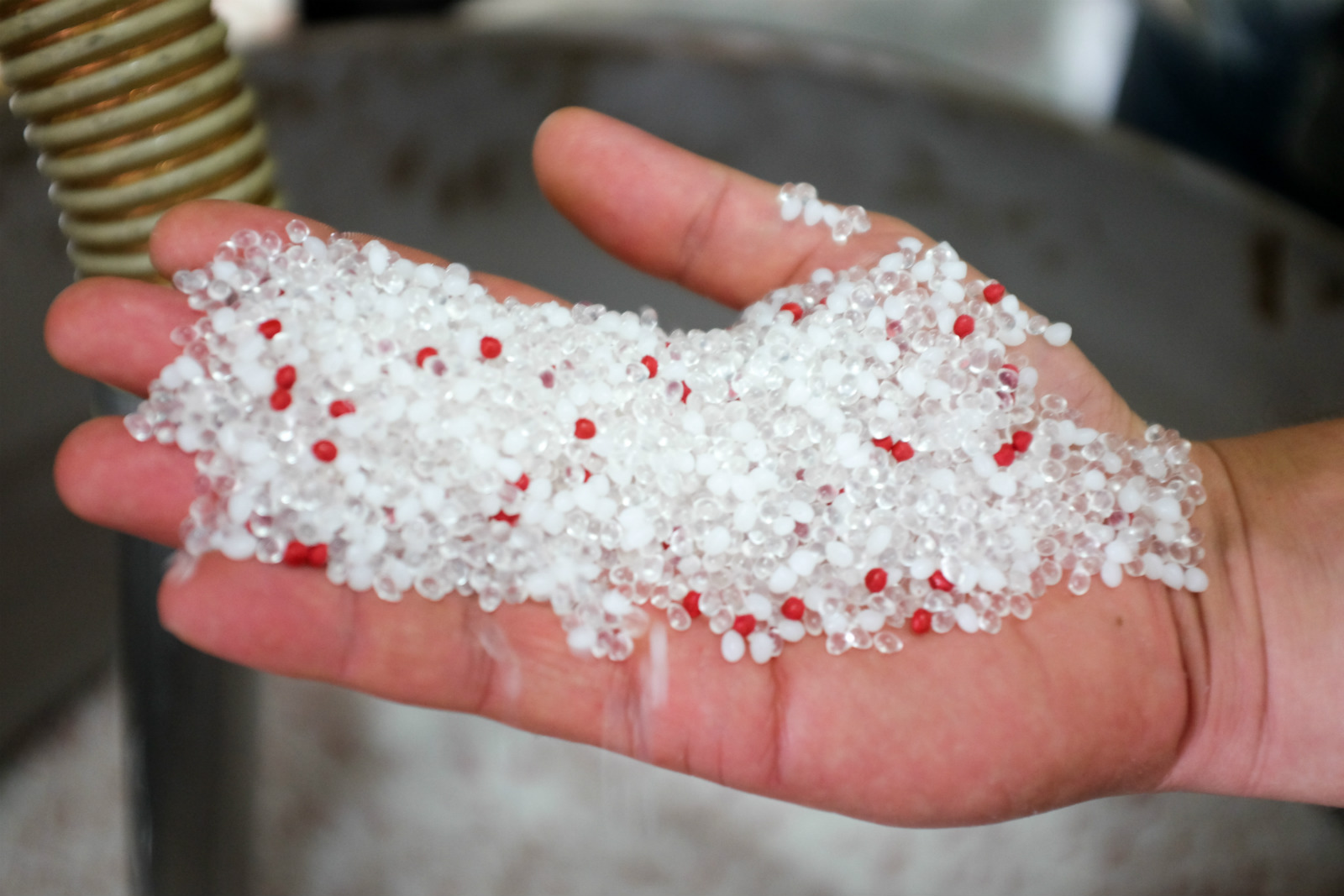
The process starts as crystals of TPU: a raw material in the form of transparent grains of plastic that are mixed with a small percentage of pigmented ones. The red master batch that will make the signature hue is just 4% of the entire mix. The plastic is then melted and sent to the molds. Each single piece of the Aurelien’s sole can have more than one color, depending on the style. The more colors, the more passages through the machines it must take.
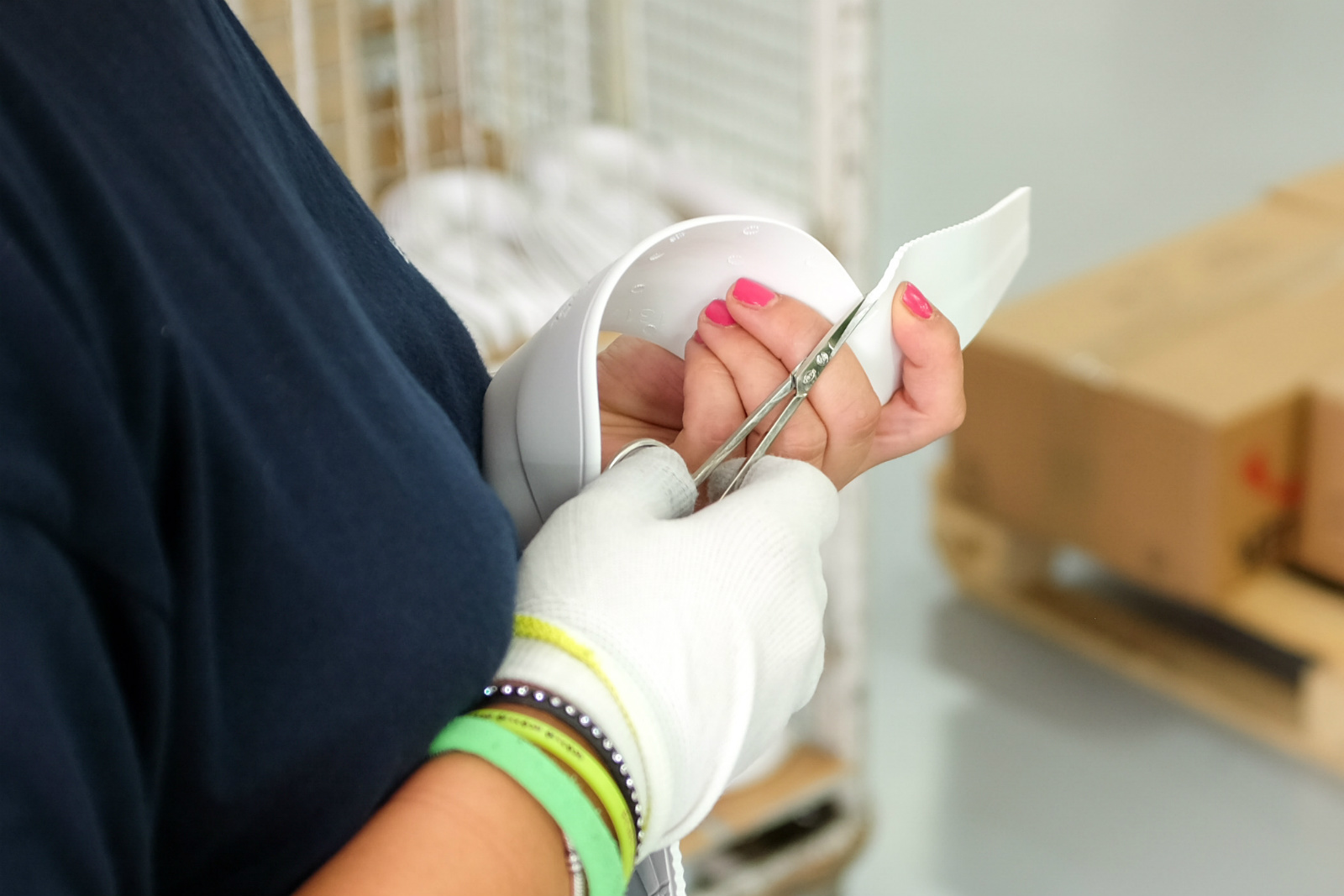
Each step of the production requires a manual phase wherein an individual checks the condition of the previous addition. “We believe that each passage should involve quality controls,” the production director tells us, underlining that in total each single sole will go through and average of eight to 10 quality-checks.
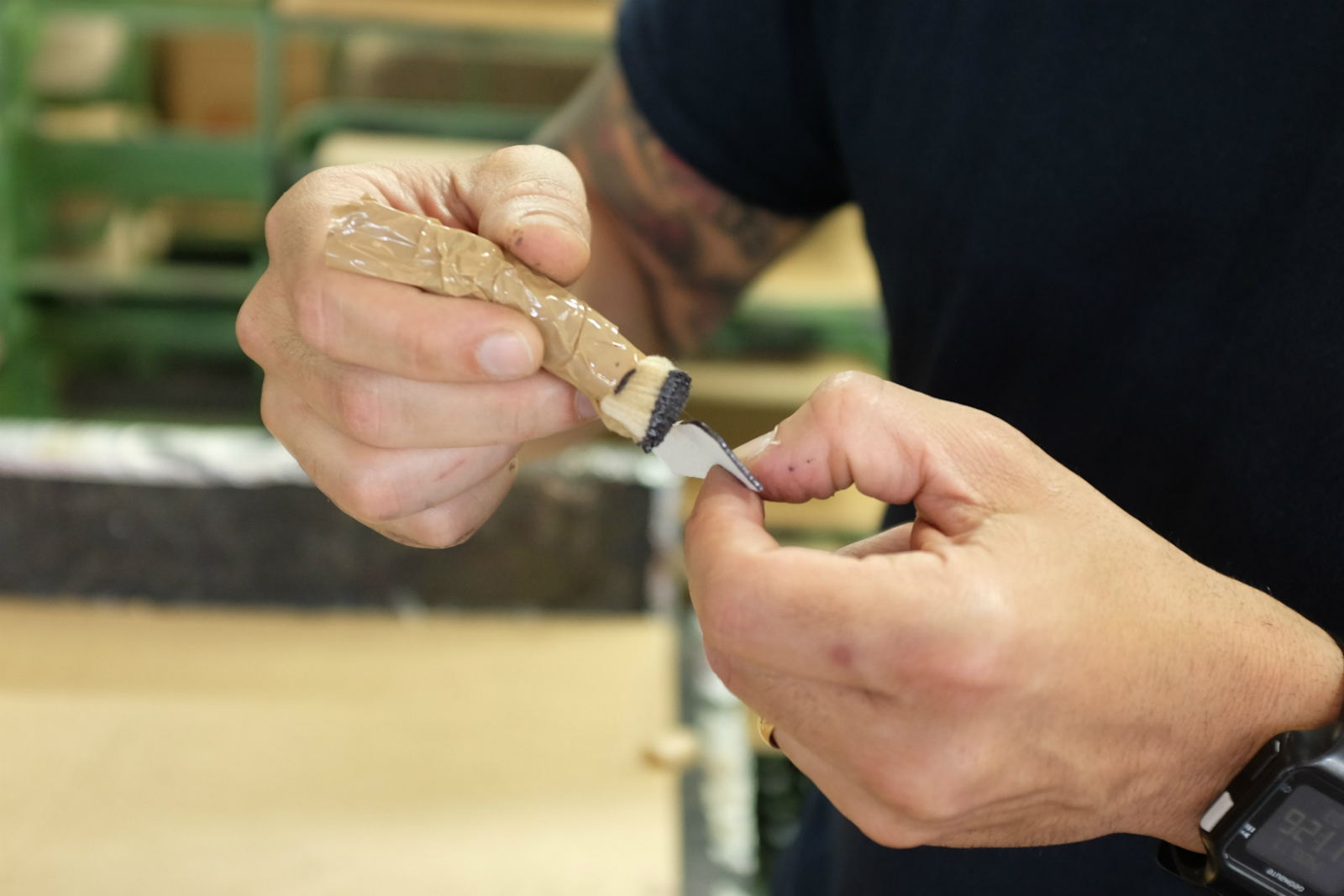
Such production and assembly steps are unusual for a rubber sole on a sneaker. Molding is just the beginning, because the greater part of the process is manual and includes milling, a treatment usually reserved for leather soles. Some of the actions look odd to the untrained eye. A group of employees uses tiny scissors—similar to those used for a manicure—to perfect the work of the machine on a tiny logo that will appear on the back of the Aurelien. Not far, a tattooed man uses a minuscule brush to paint the borders of one-inch leather pieces. The technician explains, “It’s all about the details. This element will be pretty visible on the side of the sole and we want to show a perfectly finished border.”
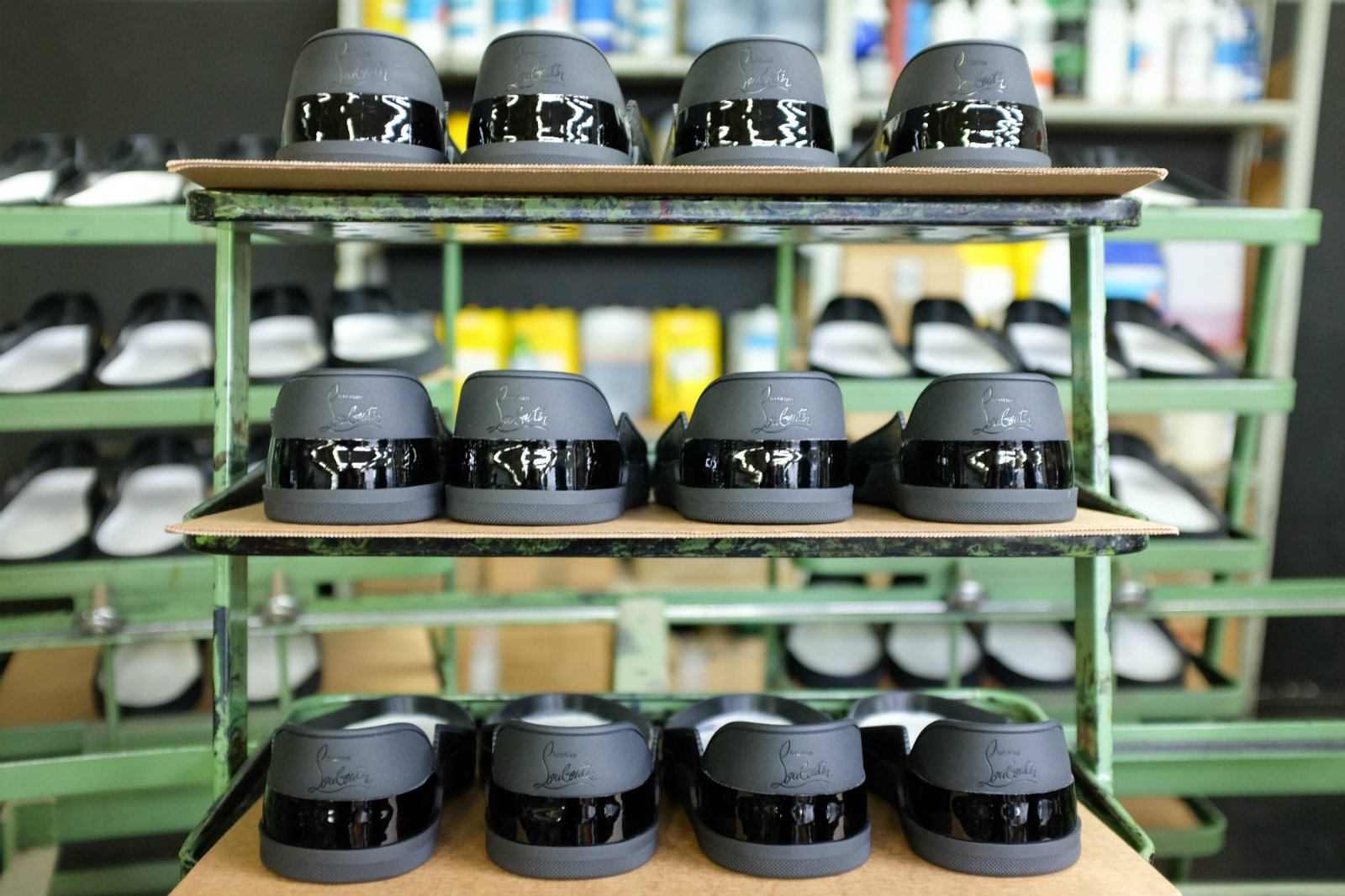
“This sole was a technical challenge and it took several months of development,” he continues. “The crazy part is that most of the key elements will be completely hidden and the customers will never realize how important they are.”
Before moving onto the next factory, we find out yet another important piece of information. This facility has embraced sustainability; production waste is either reused or chopped and sent to various recycling sites.

The next step of our tour—a second factory—is where uppers are assembled and joined to the sole. The upper of the Aurelien is a piece of precise design in which 45 elements form two different layers. An internal neoprene structure is covered with an elaborate leather puzzle composed of tiny elements. All parts are stitched together by highly skilled artisans. Learning to perform such a delicate tasks takes months—sometimes years. Our guide explains, “We understand pretty soon if [the employees] have the talent to do so.”
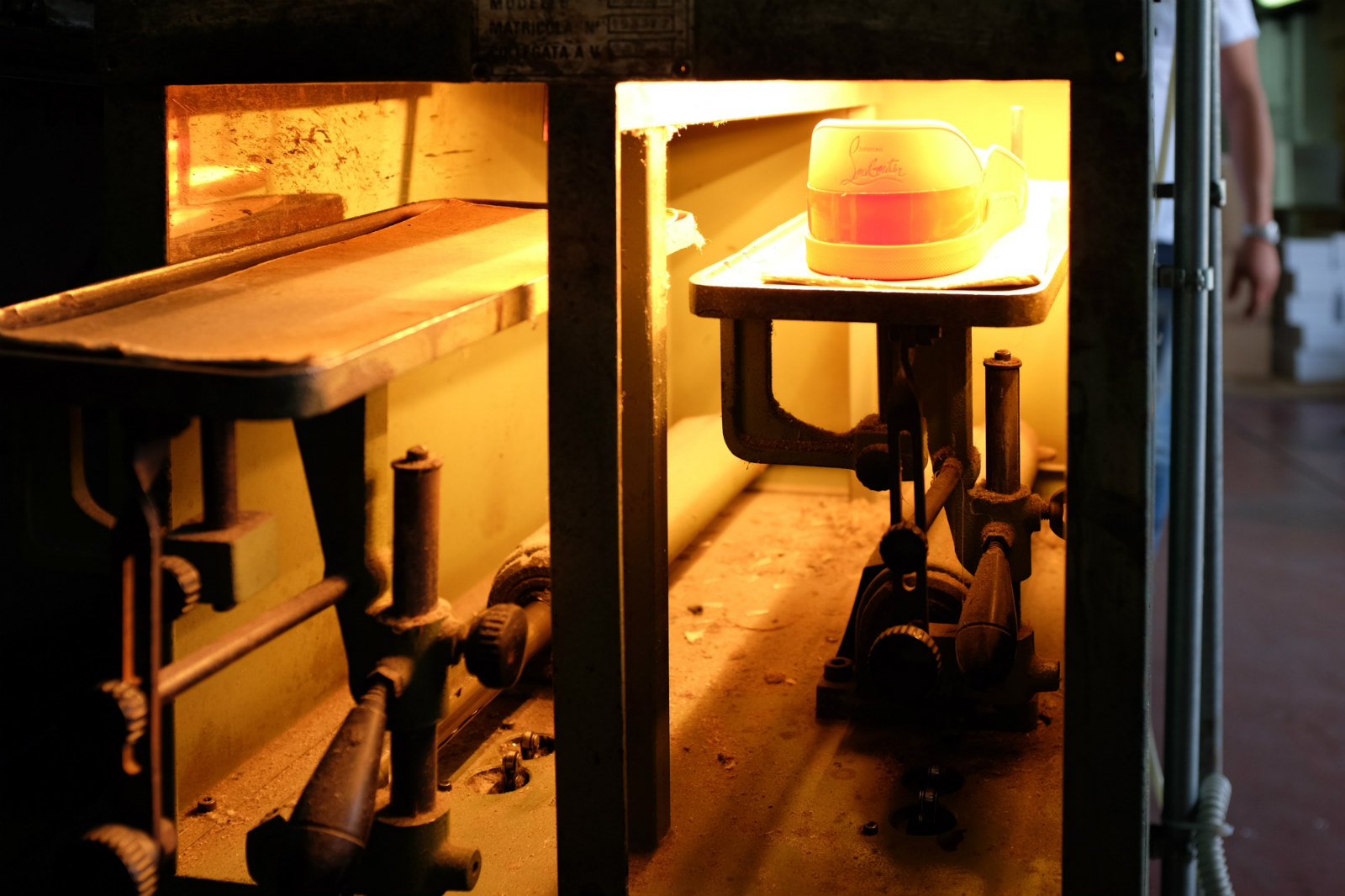
After the upper is completed, it gets hot-glued to the sole—a pretty common procedure for a sneaker. But that’s not the end of it, yet. A group of craftspeople sew and secure each part of the irregular profile of the sole. This final step is carried out with a classic needle and thread; the only way to guarantee a perfect finish. The finished stitching looks like a signature.
From design to boxing, the creative development and physical production processes behind the Aurelien are as innovative as they are complex. Technology meets craftsmanship in equal parts and the result is a shoe that looks and feels like a modern, hybrid object.
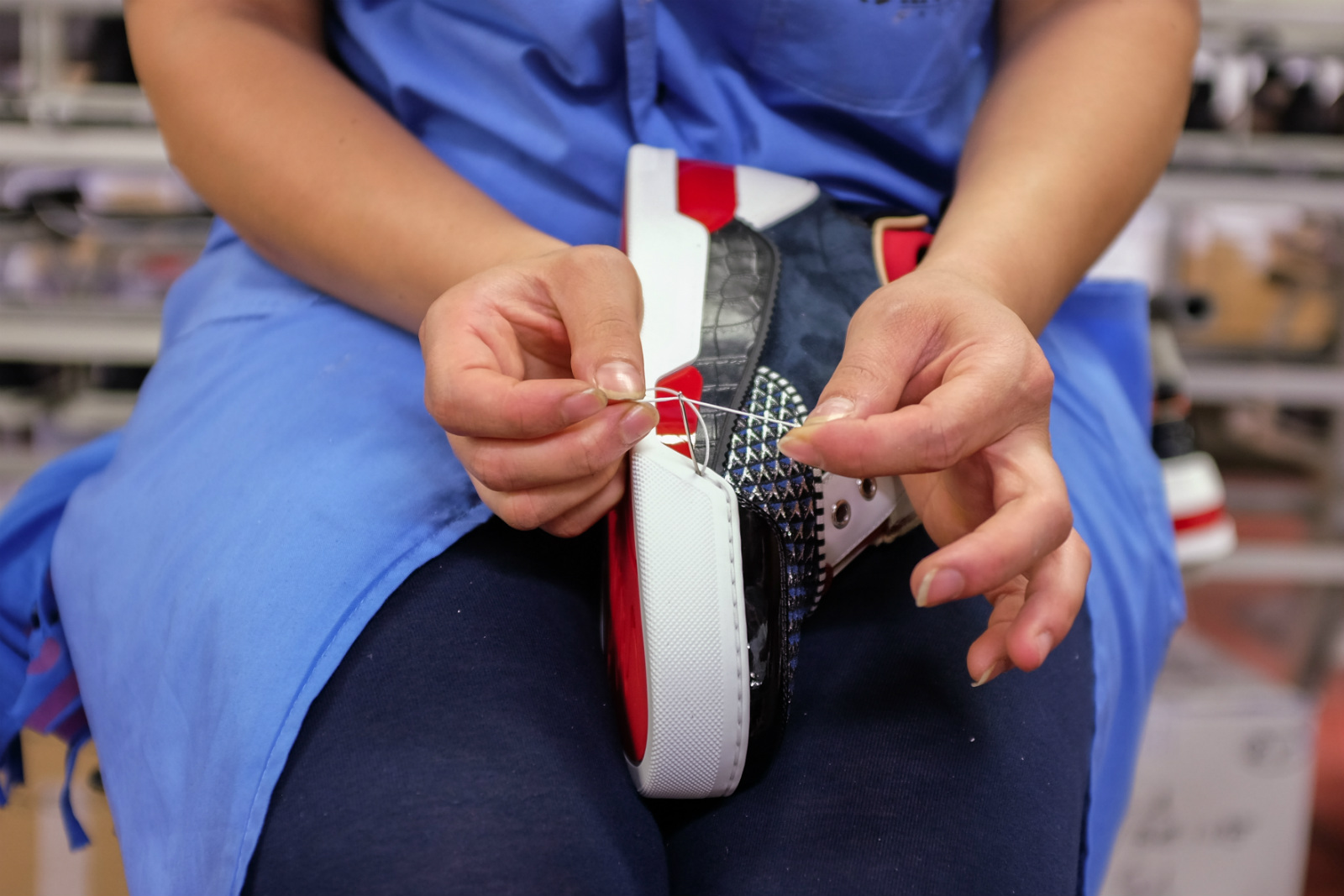
The Aurelien retails for $995 and are available online and at Christian Louboutin stores globally.
Images courtesy of Paolo Ferrarini
